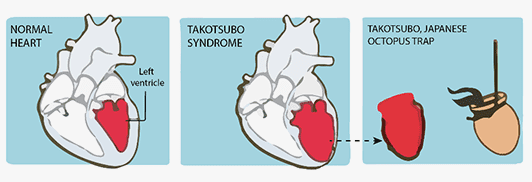
Many people experience what it’s like to be heartbroken from the loss of a loved one or end of a romance. But a heart can actually "break" when we endure intense emotions. Called broken heart syndrome, it’s triggered by the release of stress hormones in the bloodstream.
Broken Heart Syndrome Versus Heart Attack
You may think you’re having a heart attack. The symptoms – chest pain, dizziness, faintness, nausea and shortness of breath – are similar. However, blocked arteries are the major culprits in heart attacks, so the causes are quite different.
Broken heart syndrome is usually temporary with no permanent heart damage, but it’s vital you seek immediate medical attention. This is to gain a clear diagnosis and appropriate treatment. The condition affects part of the heart, reducing its ability to pump blood through the rest of the body. Most have completely normal coronary arteries or minimal coronary artery disease. The heart muscle is stunned but returns to normal within a few weeks and with no permanent scarring. Broken heart syndrome can affect anyone, but it is more common among older women.
Causes
Stressors that may trigger this condition include:
- Death of a loved one
- Loss of a home, job or relationship
- Intense fear or anger
- Overwhelming excitement
- Physical illness
Diagnosis
Diagnosing this condition requires one or more tests to rule out a heart attack, including:
- Blood test to look for higher levels of cardiac enzymes caused by damage to the heart muscle
- Coronary angiogram to look at the heart’s arteries
- Echocardiogram to examine at the heart muscle
- Electrocardiogram to review the heart’s electrical activity
Treatment and Recovery
Treatment includes medications and rest to manage your blood pressure, strengthen your heart, prevent fluid buildup on your heart and help restore your heart to its normal pumping function. A cardiologist also may recommend cardiac rehabilitation.
Stress Reducers
Learning to reduce and manage stress can improve your heart health and may prevent this condition. Try relaxation techniques, such as deep breathing, meditation and yoga.
 Broken Heart Syndrome by Another Name
Broken Heart Syndrome by Another Name
Healthcare providers may refer to broken heart syndrome as Takotsubo. The word is Japanese an octopus trapping pot. The shape of the pot resembles the shape of the heart’s main pumping chamber when its left ventricle is enlarged by broken heart syndrome.



